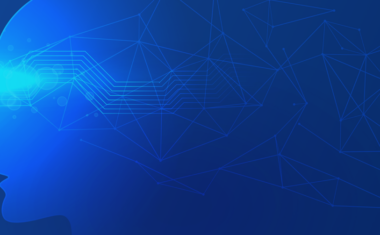“How to make a career transition from Data Analyst to Data Scientist ?” This is one of the most common questions our admission counselors come across. Our career counselors come across several talented data analysts who are keen to make a career transition to become a data scientist but are not sure where and how to begin.
“I am a data analyst but keen on further advancing my career as a data scientist. I am bored of interrogating data to produce reports and recommendations, it does not seem exciting to me anymore. I am inclined to know more about a data scientist career path where I can use my skills to build robust machine learning models to solve business problems at scale. I am very excited about becoming a data scientist. How can I make the career transition from Data Analyst to Data Scientist?.”
Are you thinking the same? Have you reached a crossroad in your professional life where you feel the need to upgrade your analytical skills or take up an exciting job role like that of a data scientist? Everybody has such moments in life. While a few get the right guidance and opportunity to accomplish it, others fail miserably. If you are one of those aspiring professionals looking to make a career transition from data analyst to a data scientist, this blog will be the best companion for you along your transition career path.
3-Step Guide For Career Transition from Data Analyst to Data Scientist
Let’s put first things first before diving into the career transition path: What is a data analyst? What is a data scientist? And, how do the two job roles differ?
What is a Data Analyst?
A data analyst –
- collects data from various sources
- organizes it effective to identify underlying relationships
- transforms it into a form for easy analysis
- performs statistical analysis,
- and visualizes it using various graphs, charts, and other visualizations to derive meaningful insights helpful for making profitable business decisions.
What is a Data Scientist?
A data scientist job role is an amalgamation of diverse traditional job roles, including computer professionals, mathematicians, statisticians, and a research scientist. A data scientist makes use of math, statistics, and advanced analytic technologies like predictive modeling and machine learning to build models and extract knowledge from data for better business decision making.
Data Analyst vs Data Scientist – The Key Differences
The end goal of a data analyst and a data scientist are the same – how data can be used to make better business decisions. However, the skills of a data analyst are not as advanced as data scientists (for instance: analysts might not have the expertise to build new ML algorithms). For example, if you query a DBMS and find out that a mom who buys a frock also buys a matching tiara for the little one and share this finding with the advertorial team of the organization – you are a data analyst. On the contrary, if you build a recommendation algorithm recommending matching tiaras for baby girls based on the purchase history of the customer – you are a data scientist.
A data analyst and a data scientist are two different job roles but considering them from a career viewpoint they are complementary to each other rather than one being at a higher level than the other. Data analysts and data scientists are like the two wheels of the same barrel. The two job roles are overlapping in nature, however, the major difference between the two is the programming/coding expertise. And let us tell you learning how to code requires just a few months and not years so your career transition from data analyst to a data scientist is not much of a difficult transition career path.
Whether you’re interested in becoming a data scientist or a data analyst, both job roles are in huge demand with over 97,000 jobs available in data science and analytics and an average data scientist salary of 8 lakhs per annum. Data analysts are also highly paid, but the average data analyst salary in India is much lower than that of a data scientist. Nevertheless, even a data analyst job role is rewarding and beneficial on its own with great demand because the world needs analysts too. Moreover, taking on a data analyst job role is definitely a good way to get started with a career in data science.
Get To Know Other Data Science Students
Pizon Shetu
Data Scientist at Whiterock AI
Joy Opsvig
Data Science Apprentice Engineer at LinkedIn
Jasmine Kyung
Senior Operations Engineer at Raytheon Technologies
How to make a career transition from Data Analyst to Data Scientist?
The career transition from data analyst to data scientist is not a linear progression where you begin your career as a data analyst and work your way up to a data scientist. You need to follow a series of practical steps and resources to climb up the success ladder as a data scientist. Here is the 3-step approach to making a successful career transition from data analyst to data scientist –
Step 1 : Understand and Exercise the Job Role of a Data Scientist
To be able to become a successful data scientist, you need to have a concise and clear knowledge of the differences between the profile of a data analyst and a data scientist. As a Data Scientist, you will have to bring a completely novel approach and perspective to understanding data. A data analyst might only be responsible for describing the trends and correlations while as a data scientist you will have to uncover new business questions and build machine learning models to answer those questions based on data.
Data Scientists are –
- Involved in building ETL pipelines
- Data Mining using Application Programming Interfaces (APIs)
- Responsible for data cleaning using data science programming languages like Python or R.
- Build predictive models using machine learning algorithms such as gradient boosting, linear regression, logistic regression, decision trees, Random Forest, and more.
- Evaluate models to validate the accuracy of analyses.
- Test and improve the accuracy of already built ML models.
- Build visualizations to narrate the story of an advanced analysis result.
- Build various automation tools and techniques like libraries to ease the day-to-day tasks for the data science team.
Having understood about a data scientist job role, you need to prepare yourself to learn and experiment considering a data scientist role as a completely new lifestyle. The best way is to begin exercising the data science skills you learn in your current role as you think deeply about the career transition. This will help you frame a clear picture of what data science skills you already know and what you need to learn. With the data available in your organisation, you can start leveraging your problem-solving skills and critical thinking today to prepare yourself for a better data science role tomorrow.
Another best approach to prepare and completely transition into a data science job role is to pursue a certified data science bootcamp that will give you complete 360-degree knowledge of all the required data science skills and diverse resources to help you prepare a perfect data science portfolio through multiple projects.
Step 2: Master the Art of Coding
As a data analyst, you might not have advanced programming expertise or coding skills because you have been involved only with identifying trends in an organization’s valuable data to project future business growth. However, a few analysts might be involved in coding in their day-to-day tasks but that would be confined only to cleaning and normalizing the company’s data. To become a data scientist having the ability to code is very critical. As a data scientist, you need to be comfortable with different programming environments to play with data as and when needed.
Understanding the syntax of a relevant programming language ( say Python, R, or Java) is necessary for any data scientist position (entry-level or senior). To make a career shift towards data science you need to learn how to implement the mathematical and statistical concepts with minimal efforts using various in-built functions and libraries in the programming language. The more coding you know the better it is for any data scientist position.
Try to work on some real-world data science projects to highlight your coding skills and strengths. This will help you master coding skills and make you better at handling the real one in a production scenario.
Step 3: Develop Your Math and Model Building Skills
As a data analyst, you will be extracting, munging, and visualizing data to aid business decisions. Though mathematical logic is involved in the analysis part, it’s not heavy math. Data analysts are usually inclined towards the minimal requirement of mathematics while data science requires a strong mathematical foundation.
As a data scientist, you will have to write algorithms from scratch requiring an in-depth understanding of linear algebra and calculus so advanced math is an absolute necessity to understand how a machine learning algorithm works and behaves. Having a strong mathematical base helps understand the nature of the machine learning model and how it can be tweaked to improve its accuracy. Even if you are using the predefined libraries, it is essential to understand the calculations that are being performed behind the scenes before you can actually apply them to the actual business problem.
Apart from making maths your friend, you will need to enhance your model building skills by working with your peers and other data scientists to solve challenging business problems. This will help you explore your model building skills and evaluate them.
Advice from Springboard Experts on Career Transition
No one is going to push you to reach your data science destination. Be proactive in finding lucrative data science opportunities and volunteer yourself whenever a data science task comes up within your team or there are similar open data science job opportunities in your organization. Acquiring and learning all the data science skills might take longer than expected because even the best data scientists in the world still have lots to learn. Do not worry about having limitations with your skillset as you can just better with each day. All you need is a determination to reach a particular skill level.
The career transition from data analyst to a data scientist should be accompanied with a well-crafted transition plan. We suggest you do complete research on what the data scientist job role entails and then do a self-assessment of your existing analytic skills. Identify the experiences and skills gap that you need to fill while making the transition. Having identified the skills gap, brand yourself as a data scientist through the roles and responsibilities taken on by a data scientist with the goal of transforming into a successful enterprise data scientist.
Companies are no longer just collecting data. They’re seeking to use it to outpace competitors, especially with the rise of AI and advanced analytics techniques. Between organizations and these techniques are the data scientists – the experts who crunch numbers and translate them into actionable strategies. The future, it seems, belongs to those who can decipher the story hidden within the data, making the role of data scientists more important than ever.
In this article, we’ll look at 13 careers in data science, analyzing the roles and responsibilities and how to land that specific job in the best way. Whether you’re more drawn out to the creative side or interested in the strategy planning part of data architecture, there’s a niche for you.
Is Data Science A Good Career?
Yes. Besides being a field that comes with competitive salaries, the demand for data scientists continues to increase as they have an enormous impact on their organizations. It’s an interdisciplinary field that keeps the work varied and interesting.
10 Data Science Careers To Consider
Whether you want to change careers or land your first job in the field, here are 13 of the most lucrative data science careers to consider.
Data Scientist
Data scientists represent the foundation of the data science department. At the core of their role is the ability to analyze and interpret complex digital data, such as usage statistics, sales figures, logistics, or market research – all depending on the field they operate in.
They combine their computer science, statistics, and mathematics expertise to process and model data, then interpret the outcomes to create actionable plans for companies.
General Requirements
A data scientist’s career starts with a solid mathematical foundation, whether it’s interpreting the results of an A/B test or optimizing a marketing campaign. Data scientists should have programming expertise (primarily in Python and R) and strong data manipulation skills.
Although a university degree is not always required beyond their on-the-job experience, data scientists need a bunch of data science courses and certifications that demonstrate their expertise and willingness to learn.
Average Salary
The average salary of a data scientist in the US is $156,363 per year.
Data Analyst
A data analyst explores the nitty-gritty of data to uncover patterns, trends, and insights that are not always immediately apparent. They collect, process, and perform statistical analysis on large datasets and translate numbers and data to inform business decisions.
A typical day in their life can involve using tools like Excel or SQL and more advanced reporting tools like Power BI or Tableau to create dashboards and reports or visualize data for stakeholders. With that in mind, they have a unique skill set that allows them to act as a bridge between an organization’s technical and business sides.
General Requirements
To become a data analyst, you should have basic programming skills and proficiency in several data analysis tools. A lot of data analysts turn to specialized courses or data science bootcamps to acquire these skills.
For example, Coursera offers courses like Google’s Data Analytics Professional Certificate or IBM’s Data Analyst Professional Certificate, which are well-regarded in the industry. A bachelor’s degree in fields like computer science, statistics, or economics is standard, but many data analysts also come from diverse backgrounds like business, finance, or even social sciences.
Average Salary
The average base salary of a data analyst is $76,892 per year.
Business Analyst
Business analysts often have an essential role in an organization, driving change and improvement. That’s because their main role is to understand business challenges and needs and translate them into solutions through data analysis, process improvement, or resource allocation.
A typical day as a business analyst involves conducting market analysis, assessing business processes, or developing strategies to address areas of improvement. They use a variety of tools and methodologies, like SWOT analysis, to evaluate business models and their integration with technology.
General Requirements
Business analysts often have related degrees, such as BAs in Business Administration, Computer Science, or IT. Some roles might require or favor a master’s degree, especially in more complex industries or corporate environments.
Employers also value a business analyst’s knowledge of project management principles like Agile or Scrum and the ability to think critically and make well-informed decisions.
Average Salary
A business analyst can earn an average of $84,435 per year.
Database Administrator
The role of a database administrator is multifaceted. Their responsibilities include managing an organization’s database servers and application tools.
A DBA manages, backs up, and secures the data, making sure the database is available to all the necessary users and is performing correctly. They are also responsible for setting up user accounts and regulating access to the database. DBAs need to stay updated with the latest trends in database management and seek ways to improve database performance and capacity. As such, they collaborate closely with IT and database programmers.
General Requirements
Becoming a database administrator typically requires a solid educational foundation, such as a BA degree in data science-related fields. Nonetheless, it’s not all about the degree because real-world skills matter a lot. Aspiring database administrators should learn database languages, with SQL being the key player. They should also get their hands dirty with popular database systems like Oracle and Microsoft SQL Server.
Average Salary
Database administrators earn an average salary of $77,391 annually.
Data Engineer
Successful data engineers construct and maintain the infrastructure that allows the data to flow seamlessly. Besides understanding data ecosystems on the day-to-day, they build and oversee the pipelines that gather data from various sources so as to make data more accessible for those who need to analyze it (e.g., data analysts).
General Requirements
Data engineering is a role that demands not just technical expertise in tools like SQL, Python, and Hadoop but also a creative problem-solving approach to tackle the complex challenges of managing massive amounts of data efficiently.
Usually, employers look for credentials like university degrees or advanced data science courses and bootcamps.
Average Salary
Data engineers earn a whooping average salary of $125,180 per year.
Database Architect
A database architect’s main responsibility involves designing the entire blueprint of a data management system, much like an architect who sketches the plan for a building. They lay down the groundwork for an efficient and scalable data infrastructure.
Their day-to-day work is a fascinating mix of big-picture thinking and intricate detail management. They decide how to store, consume, integrate, and manage data by different business systems.
General Requirements
If you’re aiming to excel as a database architect but don’t necessarily want to pursue a degree, you could start honing your technical skills. Become proficient in database systems like MySQL or Oracle, and learn data modeling tools like ERwin. Don’t forget programming languages – SQL, Python, or Java.
If you want to take it one step further, pursue a credential like the Certified Data Management Professional (CDMP) or the Data Science Bootcamp by Springboard.
Average Salary
Data architecture is a very lucrative career. A database architect can earn an average of $165,383 per year.
Machine Learning Engineer
A machine learning engineer experiments with various machine learning models and algorithms, fine-tuning them for specific tasks like image recognition, natural language processing, or predictive analytics. Machine learning engineers also collaborate closely with data scientists and analysts to understand the requirements and limitations of data and translate these insights into solutions.
General Requirements
As a rule of thumb, machine learning engineers must be proficient in programming languages like Python or Java, and be familiar with machine learning frameworks like TensorFlow or PyTorch. To successfully pursue this career, you can either choose to undergo a degree or enroll in courses and follow a self-study approach.
Average Salary
Depending heavily on the company’s size, machine learning engineers can earn between $125K and $187K per year, one of the highest-paying AI careers.
Quantitative Analyst
Qualitative analysts are essential for financial institutions, where they apply mathematical and statistical methods to analyze financial markets and assess risks. They are the brains behind complex models that predict market trends, evaluate investment strategies, and assist in making informed financial decisions.
They often deal with derivatives pricing, algorithmic trading, and risk management strategies, requiring a deep understanding of both finance and mathematics.
General Requirements
This data science role demands strong analytical skills, proficiency in mathematics and statistics, and a good grasp of financial theory. It always helps if you come from a finance-related background.
Average Salary
A quantitative analyst earns an average of $173,307 per year.
Data Mining Specialist
A data mining specialist uses their statistics and machine learning expertise to reveal patterns and insights that can solve problems. They swift through huge amounts of data, applying algorithms and data mining techniques to identify correlations and anomalies. In addition to these, data mining specialists are also essential for organizations to predict future trends and behaviors.
General Requirements
If you want to land a career in data mining, you should possess a degree or have a solid background in computer science, statistics, or a related field.
Average Salary
Data mining specialists earn $109,023 per year.
Data Visualisation Engineer
Data visualisation engineers specialize in transforming data into visually appealing graphical representations, much like a data storyteller. A big part of their day involves working with data analysts and business teams to understand the data’s context.
General Requirements
Data visualization engineers need a strong foundation in data analysis and be proficient in programming languages often used in data visualization, such as JavaScript, Python, or R. A valuable addition to their already-existing experience is a bit of expertise in design principles to allow them to create visualizations.
Average Salary
The average annual pay of a data visualization engineer is $103,031.
Resources To Find Data Science Jobs
The key to finding a good data science job is knowing where to look without procrastinating. To make sure you leverage the right platforms, read on.
Job Boards
When hunting for data science jobs, both niche job boards and general ones can be treasure troves of opportunity.
Niche boards are created specifically for data science and related fields, offering listings that cut through the noise of broader job markets. Meanwhile, general job boards can have hidden gems and opportunities.
Online Communities
Spend time on platforms like Slack, Discord, GitHub, or IndieHackers, as they are a space to share knowledge, collaborate on projects, and find job openings posted by community members.
Network And LinkedIn
Don’t forget about socials like LinkedIn or Twitter. The LinkedIn Jobs section, in particular, is a useful resource, offering a wide range of opportunities and the ability to directly reach out to hiring managers or apply for positions. Just make sure not to apply through the “Easy Apply” options, as you’ll be competing with thousands of applicants who bring nothing unique to the table.
FAQs about Data Science Careers
We answer your most frequently asked questions.
Do I Need A Degree For Data Science?
A degree is not a set-in-stone requirement to become a data scientist. It’s true many data scientists hold a BA’s or MA’s degree, but these just provide foundational knowledge. It’s up to you to pursue further education through courses or bootcamps or work on projects that enhance your expertise. What matters most is your ability to demonstrate proficiency in data science concepts and tools.
Does Data Science Need Coding?
Yes. Coding is essential for data manipulation and analysis, especially knowledge of programming languages like Python and R.
Is Data Science A Lot Of Math?
It depends on the career you want to pursue. Data science involves quite a lot of math, particularly in areas like statistics, probability, and linear algebra.
What Skills Do You Need To Land an Entry-Level Data Science Position?
To land an entry-level job in data science, you should be proficient in several areas. As mentioned above, knowledge of programming languages is essential, and you should also have a good understanding of statistical analysis and machine learning. Soft skills are equally valuable, so make sure you’re acing problem-solving, critical thinking, and effective communication.
Since you’re here…Are you interested in this career track? Investigate with our free guide to what a data professional actually does. When you’re ready to build a CV that will make hiring managers melt, join our Data Science Bootcamp which will help you land a job or your tuition back!







